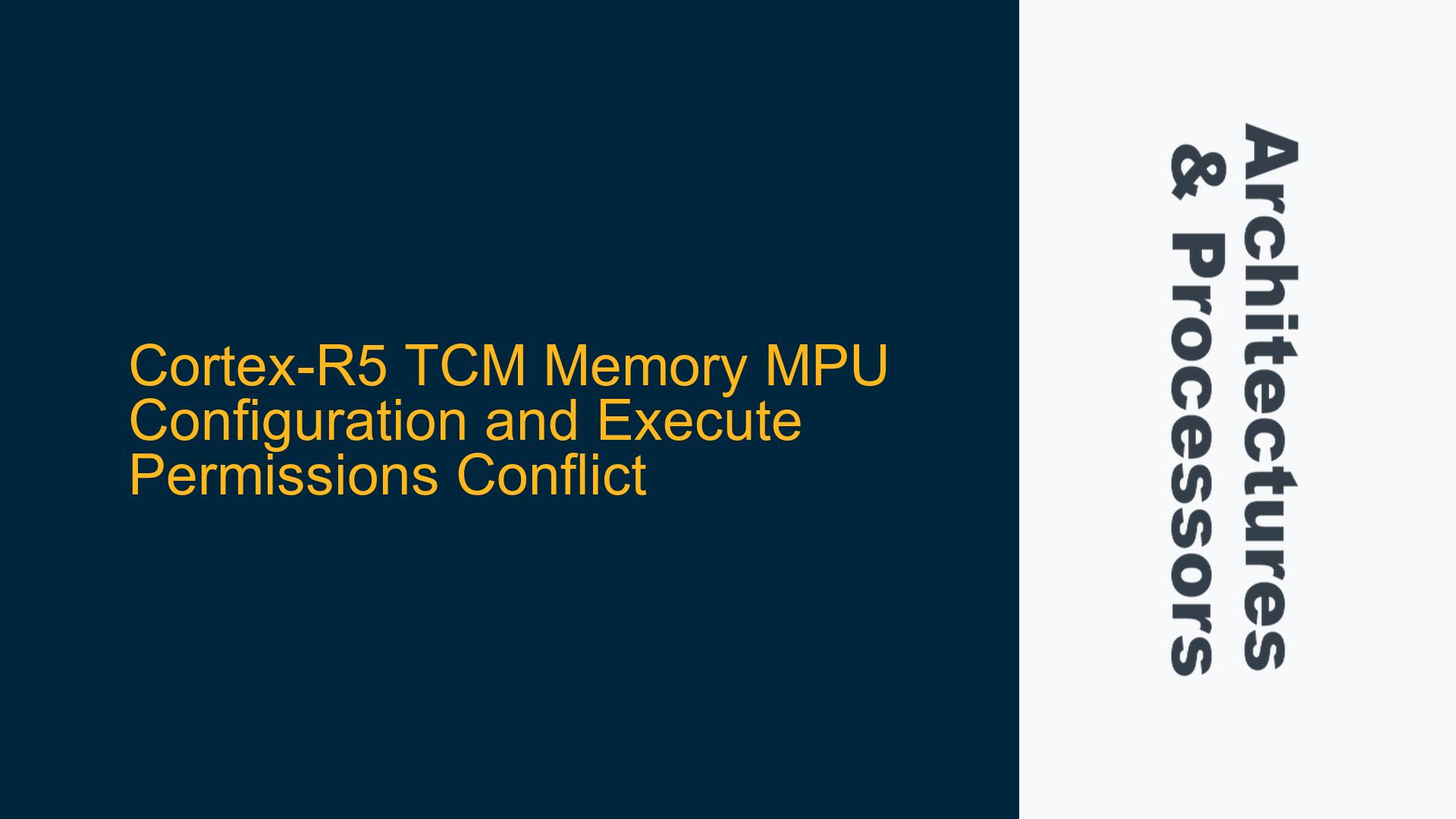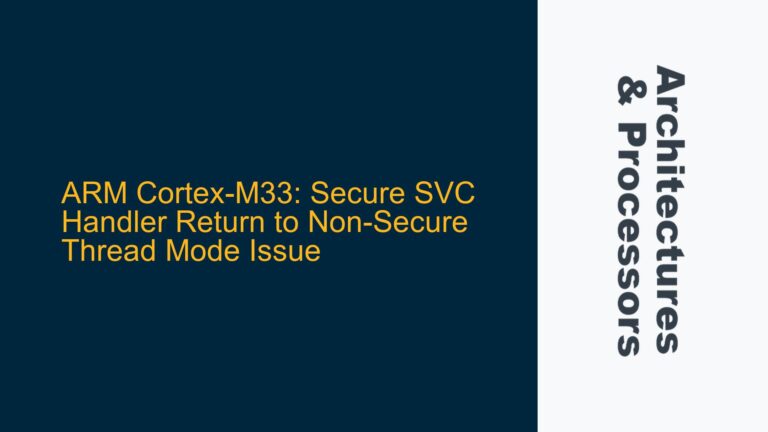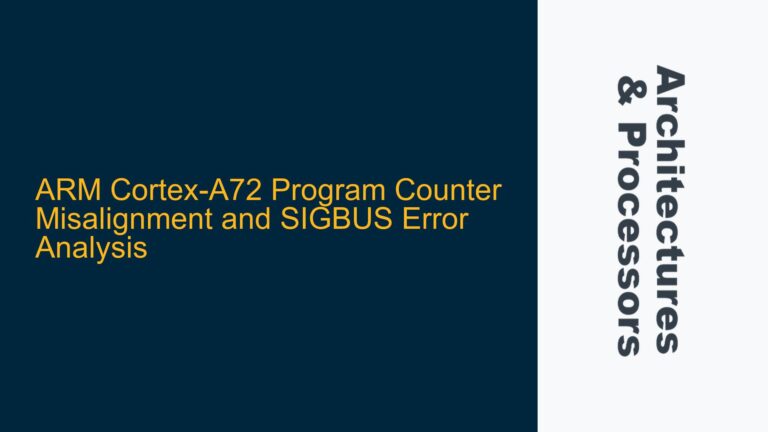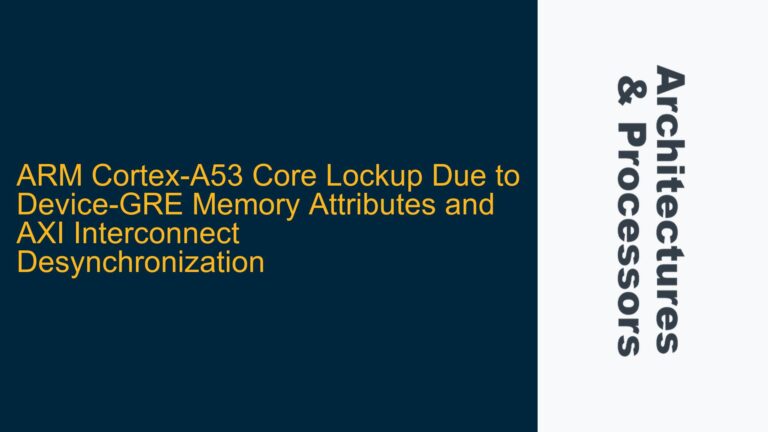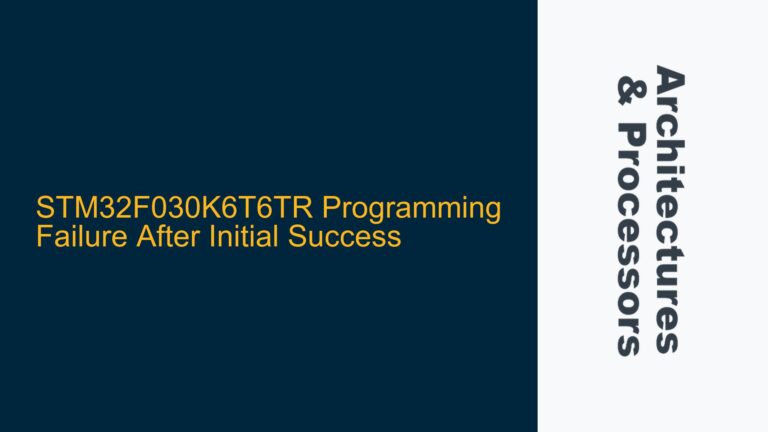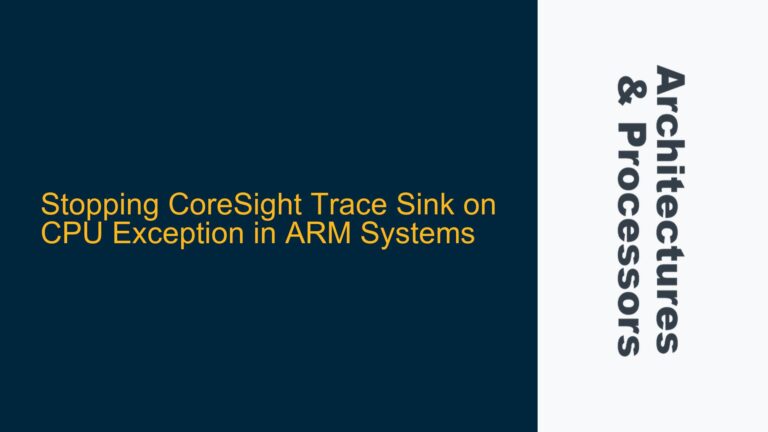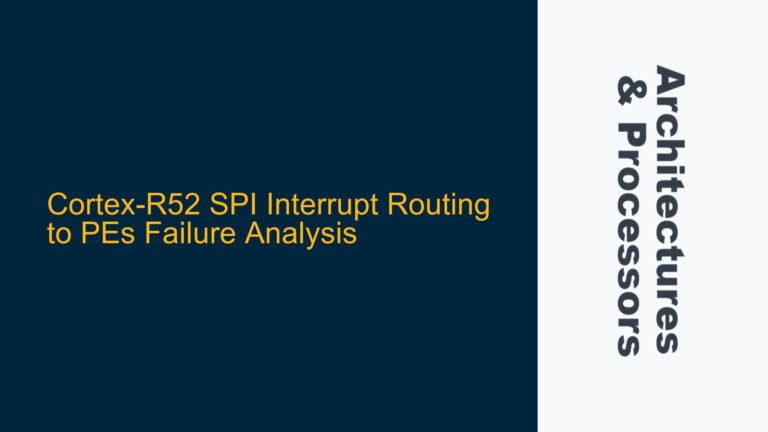TCM Memory MPU Configuration and Execute-Never (XN) Permissions Conflict
The Cortex-R5 processor, a member of ARM’s real-time processor family, is widely used in embedded systems for its deterministic performance and low-latency response. One of its key features is the Tightly Coupled Memory (TCM), which provides fast, predictable access to critical code and data. However, configuring the Memory Protection Unit (MPU) for TCM regions can be challenging, especially when dealing with memory type attributes and execute permissions. The core issue revolves around the interaction between TCM memory attributes and the Execute-Never (XN) permission, particularly when the TCM is configured with Strongly-ordered or Device memory types. This conflict can lead to unexpected behavior, such as code execution being blocked even when Execute permissions are explicitly set.
The Cortex-R5 Technical Reference Manual (TRM) states that TCMs always behave as Non-cacheable, Non-shared Normal memory, regardless of the memory type attributes defined in the MPU. However, if an MPU region is configured with Device or Strongly-ordered memory type attributes, any address within that region is implicitly given Execute-Never (XN) permissions. This creates a conflict when the same address range is also mapped to TCM, as the XN permission will override any Execute permissions set for the TCM region. This behavior can be particularly problematic in real-time systems where deterministic execution from TCM is critical.
To understand this issue in depth, we need to explore the Cortex-R5 memory model, the role of the MPU, and how memory type attributes influence access permissions. The Cortex-R5 MPU provides memory protection by defining regions with specific attributes, such as access permissions, memory type, and execute permissions. The memory type attributes (Normal, Device, Strongly-ordered) determine how the processor interacts with the memory, including caching, buffering, and access ordering. When a memory region is configured as Device or Strongly-ordered, the processor enforces strict access ordering and disables caching, which is essential for memory-mapped peripherals but not suitable for code execution.
The conflict arises because the Cortex-R5 MPU applies XN permissions to any address in a Device or Strongly-ordered region, regardless of whether that address is also mapped to TCM. This means that even if the TCM region is explicitly configured with Execute permissions, the XN permission from the Device or Strongly-ordered memory type will take precedence, effectively preventing code execution from that region. This behavior is counterintuitive and can lead to subtle bugs in systems where TCM is used for both code and data storage.
Memory Type Attributes and Execute-Never (XN) Permissions Override
The root cause of the issue lies in the interaction between memory type attributes and execute permissions in the Cortex-R5 MPU. The Cortex-R5 TRM explicitly states that TCMs always behave as Non-cacheable, Non-shared Normal memory, irrespective of the memory type attributes defined in the MPU. However, the TRM also states that any address in an MPU region with Device or Strongly-ordered memory type attributes is implicitly given Execute-Never (XN) permissions. This creates a conflict when the same address range is mapped to both TCM and a Device or Strongly-ordered memory region.
The Cortex-R5 MPU does not provide a mechanism to override the XN permission for TCM regions when they overlap with Device or Strongly-ordered memory regions. This means that even if the TCM region is explicitly configured with Execute permissions, the XN permission from the Device or Strongly-ordered memory type will take precedence. This behavior is by design, as the Cortex-R5 MPU prioritizes memory type attributes over other attributes when determining access permissions.
The issue is further complicated by the fact that the Cortex-R5 MPU does not provide a way to explicitly disable the XN permission for TCM regions. This means that the only way to ensure that code can be executed from TCM is to avoid configuring the TCM region with Device or Strongly-ordered memory type attributes. However, this may not always be feasible, especially in systems where the TCM is used for both code and data storage, and some regions need to be configured as Device or Strongly-ordered for peripheral access.
Another factor contributing to the issue is the lack of clarity in the Cortex-R5 TRM regarding the interaction between TCM memory attributes and MPU memory type attributes. While the TRM states that TCMs always behave as Non-cacheable, Non-shared Normal memory, it does not explicitly state how this behavior interacts with the XN permission from Device or Strongly-ordered memory types. This lack of clarity can lead to confusion and misinterpretation of the MPU configuration requirements.
Resolving TCM MPU Configuration Conflicts with Memory Type Attributes
To resolve the conflict between TCM memory attributes and Execute-Never (XN) permissions, it is essential to carefully configure the Cortex-R5 MPU to avoid overlapping TCM regions with Device or Strongly-ordered memory regions. This can be achieved by ensuring that TCM regions are configured as Normal memory type, which does not impose XN permissions. Additionally, it is important to carefully plan the memory map to ensure that TCM regions do not overlap with regions that require Device or Strongly-ordered memory types.
One approach to resolving the issue is to partition the TCM into separate regions for code and data storage. The code region should be configured as Normal memory type with Execute permissions, while the data region can be configured as Device or Strongly-ordered if necessary. This approach ensures that code execution is not blocked by XN permissions while still allowing for deterministic access to peripherals and other memory-mapped devices.
Another approach is to use the Cortex-R5 MPU’s region overlapping feature to create separate MPU regions for TCM and Device/Strongly-ordered memory. By carefully configuring the MPU regions, it is possible to ensure that TCM regions are not affected by the XN permissions from Device or Strongly-ordered memory types. This requires a detailed understanding of the Cortex-R5 MPU region configuration and careful planning of the memory map.
In cases where it is not possible to avoid overlapping TCM regions with Device or Strongly-ordered memory regions, it may be necessary to use software workarounds to ensure that code can be executed from TCM. One such workaround is to use the Cortex-R5’s exception handling mechanism to temporarily disable the XN permission for the TCM region during code execution. This approach requires careful implementation to ensure that the system remains deterministic and that the XN permission is re-enabled after code execution is complete.
In conclusion, the conflict between TCM memory attributes and Execute-Never (XN) permissions in the Cortex-R5 MPU can be resolved by carefully configuring the MPU regions and planning the memory map to avoid overlapping TCM regions with Device or Strongly-ordered memory regions. In cases where overlapping cannot be avoided, software workarounds may be necessary to ensure that code can be executed from TCM. By understanding the interaction between memory type attributes and execute permissions, developers can ensure that their Cortex-R5-based systems operate as intended, with deterministic performance and reliable code execution from TCM.
